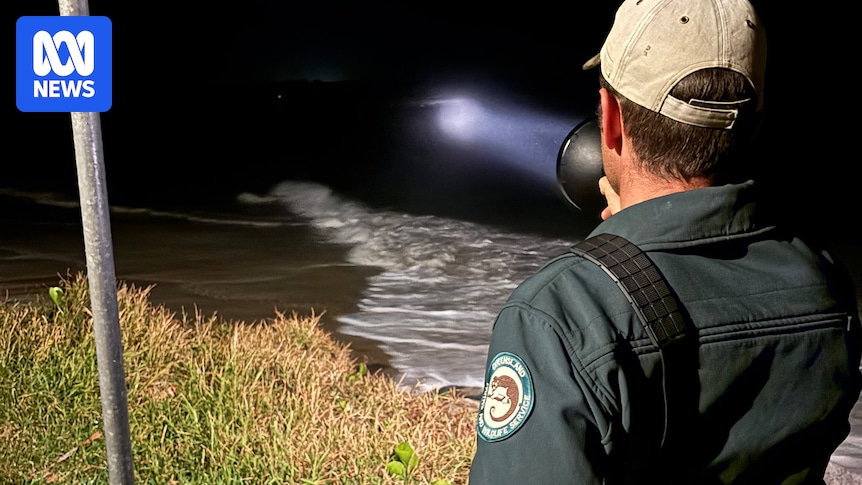Authorities are continuing to search for a crocodile reportedly seen in a Sunshine Coast waterway, hundreds of kilometres south of its typical Queensland habitat.
Rangers have been scouring the area from the air, land and water following the potential sighting by long-time angler James Graham.
He said he spotted the croc-shaped silhouette on his “fish finder” on the weekend, prompting a search of the Noosa River that continued last night.
A drone has been deployed and the search will continue today and into this evening.
Wildlife rangers have been using spotlights in the hope of detecting the crocodile by its gleaming eyes. (Supplied: DETSI)
Program coordinator Scott Booth said there had not been other public sightings since Mr Graham’s report.
“We’d also expect to see a crocodile sitting out for long periods trying to soak up any sunshine on exposed banks near the edge of the water, and we just haven’t seen that,” Mr Booth said.
He said there was a chance the sighting involved a different animal.
“That’s probably more indicative of potentially a dolphin or shark, or something like that moving across the bottom of the water,” Mr Booth said.
Wildlife rangers have taken to the water and dispatched drones as the search continues. (Supplied: DETSI)
Yesterday Mr Graham told the ABC he had spent time fishing off northern Queensland and had seen crocodiles on the fish-finder monitor before.
The habitat for Queensland crocodiles is thought to end at Gladstone’s Boyne River, about 300km north of Noosa.
In recent months a crocodile was euthanased at Mary River and another was photographed at Inskip Point.
Craig Franklin, pictured here with Steve Irwin, says it is not unheard for crocodiles to stray significant distances from their usual habitats. (Supplied: Craig Franklin)
University of Queensland professor Craig Franklin said there were sometimes “stragglers” outside traditional crocodile habitats because a larger male has forced them out of their territory.
Professor Franklin said there were historical cases of crocodiles recorded as far south as the Brisbane and Logan rivers.
He said the reptiles generally made their way back north to warmer waters.

